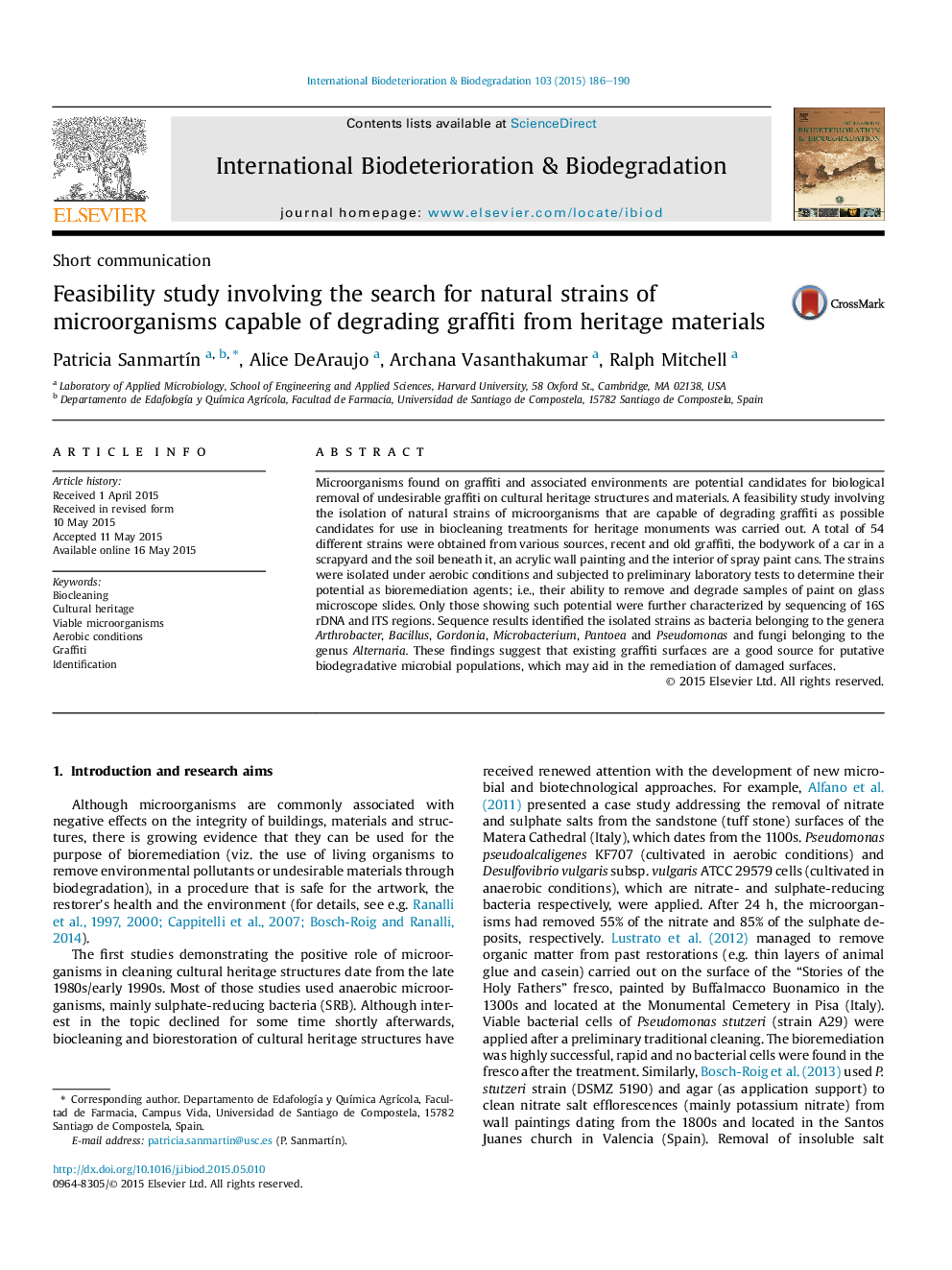| Article ID | Journal | Published Year | Pages | File Type |
|---|---|---|---|---|
| 4364419 | International Biodeterioration & Biodegradation | 2015 | 5 Pages |
•A feasibility study focused on bioremediation of graffiti spray paint.•Microbiota on graffiti and associated environments were studied.•Bacteria of the genera Bacillus, Pseudomonas and Arthrobacter were identified.•Fungi belonging to the genus Alternaria were identified.
Microorganisms found on graffiti and associated environments are potential candidates for biological removal of undesirable graffiti on cultural heritage structures and materials. A feasibility study involving the isolation of natural strains of microorganisms that are capable of degrading graffiti as possible candidates for use in biocleaning treatments for heritage monuments was carried out. A total of 54 different strains were obtained from various sources, recent and old graffiti, the bodywork of a car in a scrapyard and the soil beneath it, an acrylic wall painting and the interior of spray paint cans. The strains were isolated under aerobic conditions and subjected to preliminary laboratory tests to determine their potential as bioremediation agents; i.e., their ability to remove and degrade samples of paint on glass microscope slides. Only those showing such potential were further characterized by sequencing of 16S rDNA and ITS regions. Sequence results identified the isolated strains as bacteria belonging to the genera Arthrobacter, Bacillus, Gordonia, Microbacterium, Pantoea and Pseudomonas and fungi belonging to the genus Alternaria. These findings suggest that existing graffiti surfaces are a good source for putative biodegradative microbial populations, which may aid in the remediation of damaged surfaces.
